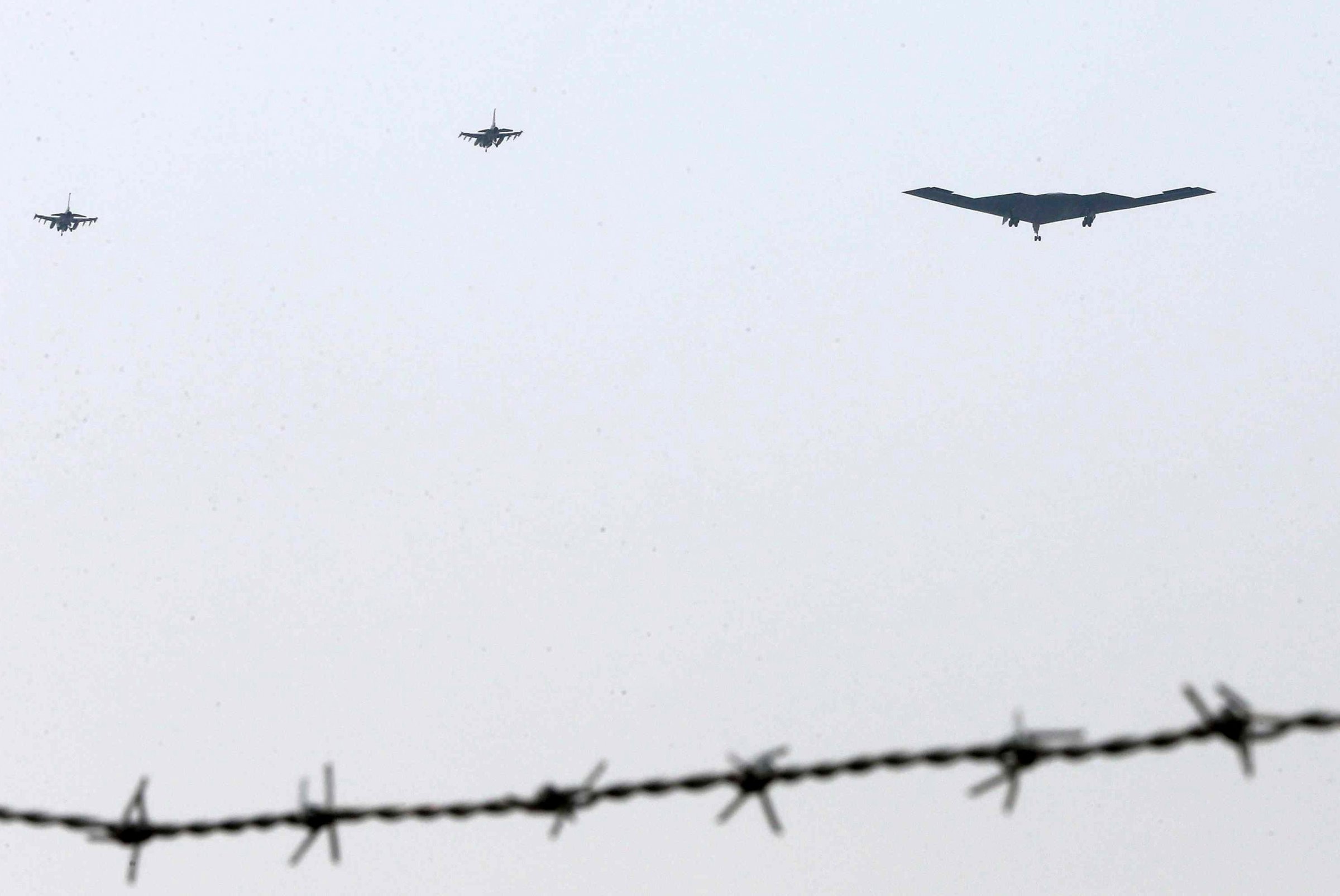
You can think of tweeting as just a civilian thing, but the U.S. military embraces it, too. Lieut. General Stephen Wilson, commander of the Air Force’s Global Strike Command, explained Wednesday just how the U.S. let North Korea know last year it wasn’t pleased with its belligerence–like threatening nuclear strikes on the U.S.
Sure, it took 38 hours for four officers to fly a pair of B-2 bombers round-trip from Missouri to the Korean peninsula (the 13,000-mile, $2.1 million trip required a million pounds of jet fuel and five midair refuelings). Halfway through the mission, they dropped dummy 2,000-pound bombs on the Jik Do bombing range, on an island off South Korea’s west coast. But that’s old hat for the 25-year old B-2.
It turns out the Air Force’s real target wasn’t on the bombing range: it was at the Osan air base, just a little bit inland from where the bombs fell. After dropping their bombs, the B-2s turned east and, according to Wilson,
did a low approach with some F-16s at Osan air base. We knew that people would take pictures of it and, quite frankly, that was the target—and that we knew that within a few moments of it overflying Osan air base that the pictures would go around the world. We were monitoring Twitter. It took 10 minutes for the pictures to go out around the world.
That’s supersonic.
More Must-Reads From TIME
- The 100 Most Influential People of 2024
- The Revolution of Yulia Navalnaya
- 6 Compliments That Land Every Time
- What's the Deal With the Bitcoin Halving?
- If You're Dating Right Now , You're Brave: Column
- The AI That Could Heal a Divided Internet
- Fallout Is a Brilliant Model for the Future of Video Game Adaptations
- Want Weekly Recs on What to Watch, Read, and More? Sign Up for Worth Your Time
Contact us at letters@time.com